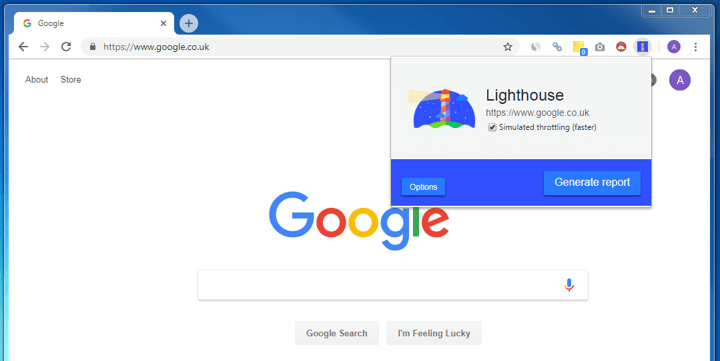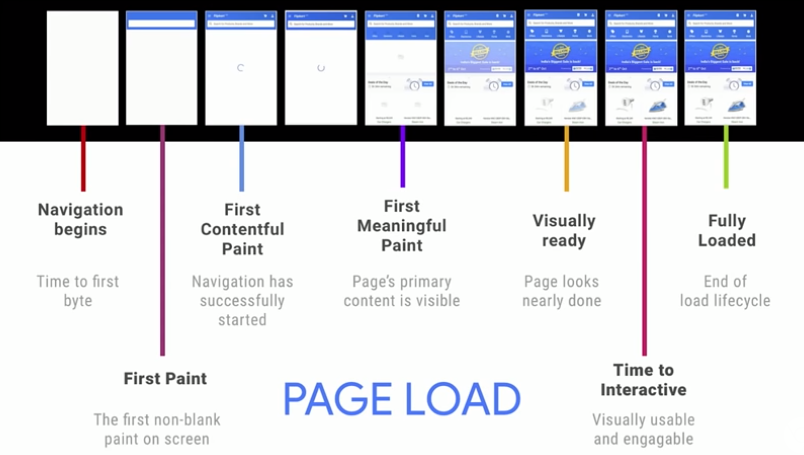4 E-commerce Trends in 2026
What will the biggest e-commerce trends be in 2026? Artificial Intelligence will clearly play a big role. We explore those trends with 4 predictions.

Google has a huge range of tools that you can use to optimise your website. Google Ads, Google My Business, and the Merchant Centre are good examples of these kinds of tools. Have you ever heard of Google Lighthouse though? In this article, we’ll explain what exactly Google Lighthouse is and what you can do with it.
Google Lighthouse is a tool that allows you to perform an audit on your website. It will give you a score for different categories that it analyses in order to help you optimise your website as much as possible.
You can use it as a simple Google Chrome extension or together with Chrome DevTools (this is a collection of web developer tools, directly in Chrome). We are going to talk about the Chrome extension in this article. If you're interested, you can find out more about DevTools here.

If you've installed the Chrome extension, it looks like the above image.
Go to the page you want to investigate, click on the tool’s icon, and then click on 'Generate report'.
The extension then opens a new screen in which the website is loaded in different forms and is therefore tested on different points. After loading the page, Lighthouse opens a new screen with the report.
The website is tested on 5 different points:
The first part of the report looks like this:

You immediately see the different parts and how you scored for each part on a scale from 0 to 100. Getting a 0 is the lowest possible score you can get in any category. However, a 0 score usually indicates an error in Lighthouse. If you repeatedly see a 0 score, you can file a bug on the Lighthouse repo.
Let’s go through all the parts below and explain what they mean:
The performance audit includes a number of points that are checked. One, for example, is the First Meaningful Paint (FMP) audit, which measures when the visual content of your page is displayed. What exactly is measured here is the time between starting the page load and rendering the visual images. According to Google data, very good-scoring websites render the FMP in about 1,220 ms. This time, therefore, corresponds to a score of 99.
The image below basically shows how a webpage always loads. In 7 steps, the graphics are loaded first, then you can actually use the first buttons that appear on the page and the like. And finally, the entire website is loaded. This process is the basis for Google Lighthouse.

Not every point for the Performance Score is counted equally. Here you can find out how much weight the different points carry (for each part).
If you perform a Lighthouse audit several times, you will probably see differences in the results for the Performance component. This is because the website will always load in a different way and at a different speed. This is completely normal.
A Progressive Web App (or PWA) is a normal website that has the functionalities of an app, which is also available offline. This means that your website can be used as a kind of simplified app (e.g. the Starbucks website lets you order items similar to their native app). This is an important development nowadays since almost everything happens via mobile devices. So this score measures how well your website works as a simplified mobile app.
The PWA score is based on the “Baseline Progressive Web App Checklist” from Google. This contains 14 points that your website must meet. Lighthouse automatically checks 11 of the 14 points on the checklist during an audit. As opposed to the Performance Score, each point in the PWA score carries equal weight. Each satisfied category, therefore, corresponds to 9 points for the PWA score.
Recommended reading:
Think with Google: A Free Resource for Online Shops

Shutterstock/daniellson59
With the Accessibility Score, the different points weigh in different ways (just like with the Performance Score). What is different here, however, is that you only get the points if you have fully satisfied the condition. In the Performance Score, you can get partial points if you have partially earned it. Here, this is not the case. It is all or nothing.
With accessibility, there are very clear conditions that you have to meet, such as: images have an alt-text, the page has an understandable language, elements are clearly structured, etc.
With the Best Practices Score, various things are tested, such as the use of HTTPS, if users can paste text in the 'password' field, and different technical issues.
These are things that are often used on other websites and that work well. This is the standard for websites nowadays. This score shows you how your website fits into this standard.
The SEO score indicates how search engine-friendly your website is and how easily your pages rank within Google (and other search engines).
Is your website mobile-friendly? Is the font size normal? Is a distinction made between the H1 and H2 headlines?
This is mainly about how the page looks, is technically set up, and whether you can score well and get a high ranking on Google.
Do you already have a website for your business but want to optimise it further? Then, let Google Lighthouse create a report easily and free of charge. You get to see all the details for the elements you need to work on, as well as the parts that are already optimised. This way, you can make your website completely optimal for Google and make it as smooth as possible for use on any device!
This article was translated and adapted from our Dutch blog: Wat is Google Lighthouse?
20/07/21What will the biggest e-commerce trends be in 2026? Artificial Intelligence will clearly play a big role. We explore those trends with 4 predictions.
SEO is an important tool for e-commerce businesses to bring in new customers. Here are the best tips for your online shop to rank higher in Google.